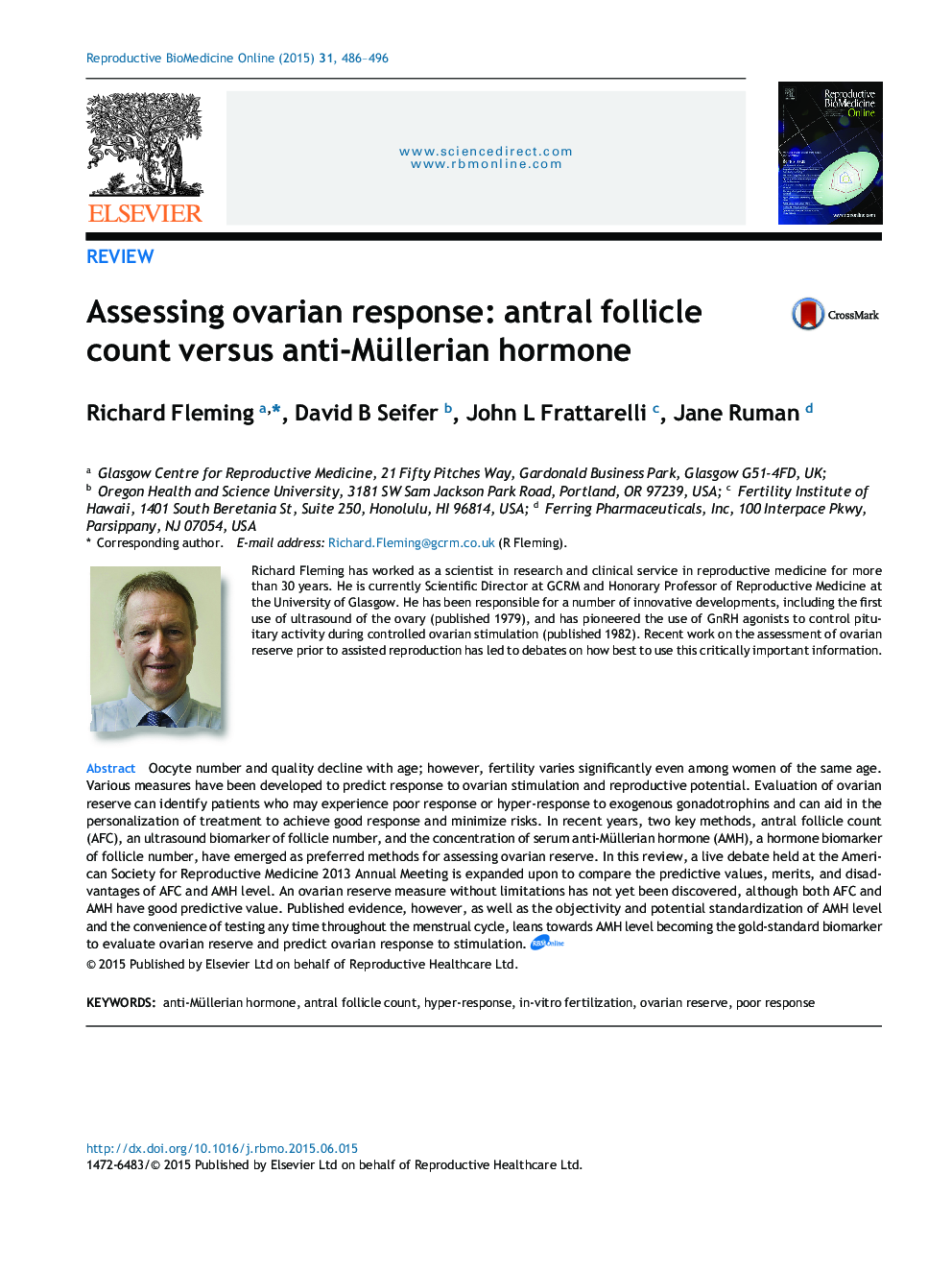| Article ID | Journal | Published Year | Pages | File Type |
|---|---|---|---|---|
| 6188598 | Reproductive BioMedicine Online | 2015 | 11 Pages |
â¢Determination of ovarian reserve can predict response to ovarian stimulation.â¢Response prediction can guide protocol and other reproductive therapy decisions.â¢Both AFC and AMH level provide good prediction of poor and excessive response.â¢AFC is quick and non-invasive, but subjective, with inter-operator variation.â¢AMH is objective, but currently lacks international standardization.
Oocyte number and quality decline with age; however, fertility varies significantly even among women of the same age. Various measures have been developed to predict response to ovarian stimulation and reproductive potential. Evaluation of ovarian reserve can identify patients who may experience poor response or hyper-response to exogenous gonadotrophins and can aid in the personalization of treatment to achieve good response and minimize risks. In recent years, two key methods, antral follicle count (AFC), an ultrasound biomarker of follicle number, and the concentration of serum anti-Müllerian hormone (AMH), a hormone biomarker of follicle number, have emerged as preferred methods for assessing ovarian reserve. In this review, a live debate held at the American Society for Reproductive Medicine 2013 Annual Meeting is expanded upon to compare the predictive values, merits, and disadvantages of AFC and AMH level. An ovarian reserve measure without limitations has not yet been discovered, although both AFC and AMH have good predictive value. Published evidence, however, as well as the objectivity and potential standardization of AMH level and the convenience of testing any time throughout the menstrual cycle, leans towards AMH level becoming the gold-standard biomarker to evaluate ovarian reserve and predict ovarian response to stimulation.
